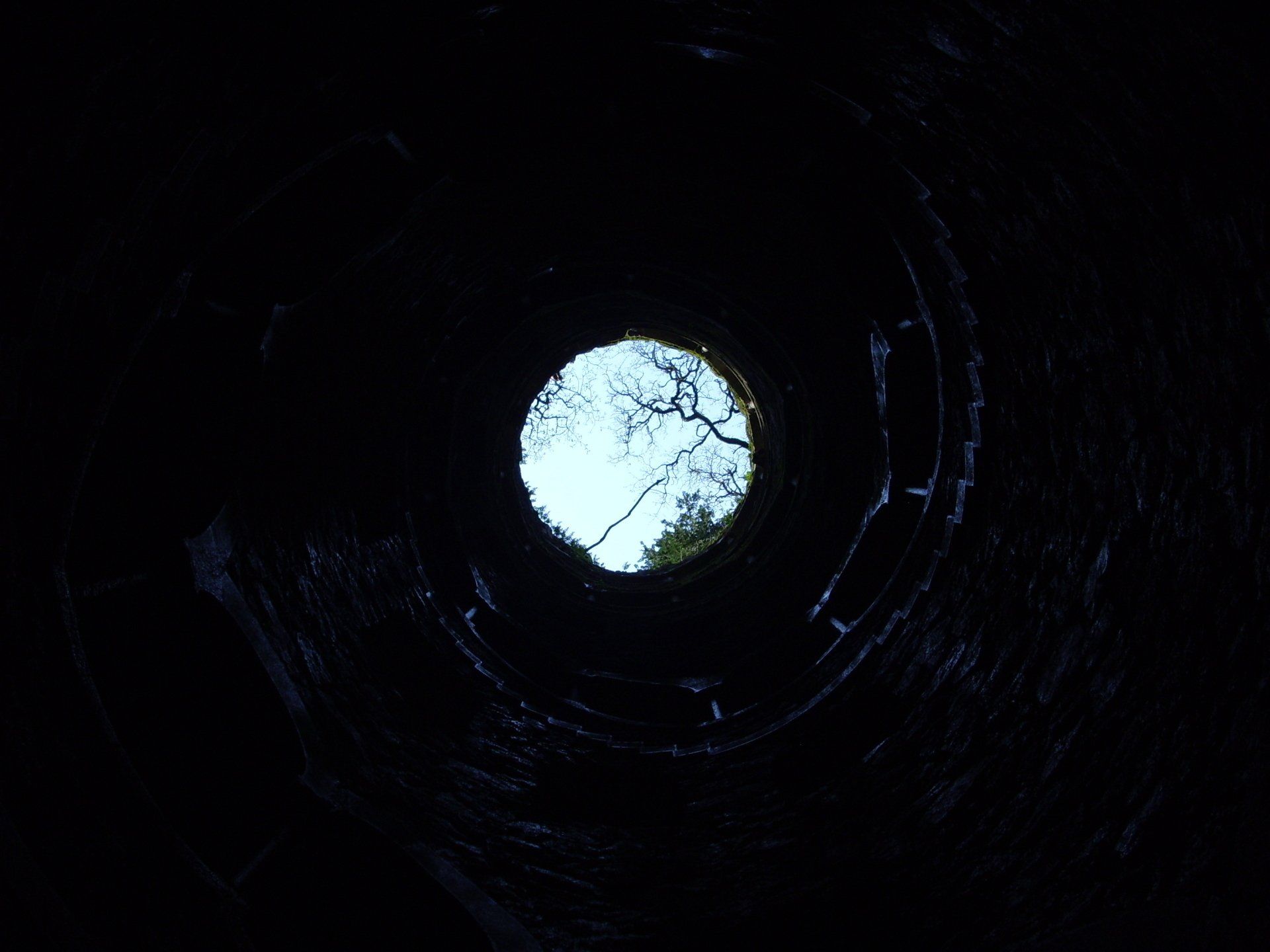Across the Rubicon
The only sustainable strategy is adaptation
Reconsidering Nothing
Sometimes Nothing is Something.
Some might say that one is the loneliest number, but more often than not it’s zero that really gets the short end of the stick. This post is dedicated to a topic that frequently gets overlooked and is often under-considered – the absence of something. Very often, it’s just as important for us to know where something isn’t happening as it is to know where something does occur. So important, in fact, that it’s crucial to understand that zero isn’t really defined as the absence of something – it is actually the presence of nothing.
The discovery of zero marked a huge advance in our ability to describe the world. The first known use of a symbol zero as a numerical placeholder were the Sumerians, roughly 5,000 years ago, to indicate the absence of a number in place notation. It took another few millennia before zero became a numeral in its own right to indicate nothing in its present sense.
The Babylonians adopted it from the Sumerians, but historically a numerical zero arose independently in ancient India, China, and Mesoamerica as well. For archaeologists, especially epigraphers (people that decipher ancient scripts), the concept of zero is a huge technological indicator. It’s something that previously – i.e., for hundreds of thousands of years – humans simply did not appear to do. Behaviorally, from a common sense view, it really doesn’t make much sense. Why make special note that something is not present?

Signifying Nothing
The discovery of zero marked a cognitive and technological shift from enumeration to calculation. The true birth of mathematics in a very real way, discovering zero permitted a concept of nothingness or absence that had both philosophical and practical importance. By integrating a concept of what isn’t there with the observable things that could be counted, people could adequately describe the totality of the environment in discrete terms.
More importantly, they had a means to calculate what will or might be. In the ancient cultures where we find a discovery of zero, we begin to see enormous advances in astronomy and calendrics – both of which were used to make predictions as well as to record events. It marked a civilization’s shift towards devoting significant resources to anticipating events as well as describing them.
Take for example the complex system of calendars created by the ancient Maya, most notably the famous Maya Long Count calendar. It uniquely identified every day beginning with the date of their creation myth using a combination of base-20 and base-18 numerical systems! A symbol for zero was used to mark the initial member of the sequence for each place notation, allowing the calculation of for dates within calendar cycles well into the future.
Significantly though, it also allowed them to project the dates of important astronomical and ceremonial events into the future as well as into the past. They were able to calculate the timing of these events with remarkable accuracy, which guided everything from their ceremonial cycles to their agricultural efforts to their political events.
Being and Nothingness
A somewhat more subtle cognitive importance to zero is in recognizing nothingness as a category of data. Most often, as either scientists or analysts, we focus our efforts on where there are concentrations of values within our data. We are looking for patterns or processes with large and diverse bodies of information – e.g., calculating, describing, computing, and understanding what they mean. In doing so, we prioritize data that suggest the presence of something of interest. Those are the observable elements that we build our world around, so that is clearly where the “action” is. Of course we should be focused on what is there. Shouldn’t we?
What often goes overlooked is that you can’t know that there is a pattern unless you also know where that pattern is not occurring. In other words, a pattern is a pattern only if there are contrasts and boundaries – i.e., those gaps of nothingness that establish borders and constraints. It’s just as important to know where the pattern reaches its limits – i.e., where it slows or stops.
It isn’t sufficient if the pattern is only delineated by a concentration of somethings in a field of unknowns. That is why we have separate classifications for unknowns (e.g., NULL or ) versus nothings. Zero is an enumeration of known nothings. Where are the pockets or holes within the field of information that we’re calling a pattern?
Interestingly, there is an entire field of mathematics called homology that is dedicated to the study of a shape’s holes. Specifically, how shapes in arbitrary dimensions may be associated by understanding where the shape (or manifold) does not exist.
If you haven’t described the known holes in your data – where you know something is absent – you’ve only partially identified a pattern.
This is not merely a philosophical observation, though. When we focus only on the patterns of presence in whatever we are studying, there is a strong proclivity to dismiss the findings of when and where something isn’t found. Just a few years ago, there were a number of articles published about a phenomenon of self-selection biases against negative findings in academic research. In short, nothing would be published if an expected pattern had not been found by a project.
The result, in some cases, was that a number of negative patterns were not being identified and published. After all, who would want to risk their professional reputation by publicly announcing that their project failed to find any significant patterns? Similarly, we are frequently taught that it isn’t proper to prove a negative so it’s rare that researchers will wade into arguing that there is a persistent pattern of absence in an area where some effect is expected.
While it’s true that you can’t argue for a negative pattern based on a lack of evidence, it’s actually important to indicate cases where there is proven evidence for an absence of pattern. Not to do so would be effectively “cherry-picking” positive patterns to the exclusion of broader, and potentially more important negative patterns.
Nothing Ventured, Nothing Gained
The social pressure, whether in the academic or professional world, is to find and publish positive findings and insights – to demonstrate something for all the work involved. Aside from the bias towards finding positive patterns there is also a reluctance to admit when some approach, method, or experiment failed. We don’t like to admit that what we were doing didn’t work, that the results were inconclusive, or that the expected wasn’t found. In many cases, it’s actively discouraged. In general, we simply start into something else and move on.
People like to quote aphorisms that failure is “the best teacher” or “the paving stones of success” or some variant on how many ways Edison found to not make a light bulb. It is actually quite rare that anyone wants to be the cautionary tale. Most people are not willing to publish their failed experiments and rejected hypotheses, or to acknowledge that the time and resources didn’t produce results.
Unfortunately, this attitude is pernicious and the trend is overtaking the most crucial aspect of research – to understand the unknowns. Businesses want guaranteed, or at least safe, return on investment and many grant-funding organizations are following suit. Grant-seekers often have to supply some form of “capacity” statement, along with lengthy and time-consuming documentation of prior work and methods, to prove that an investment will have a certain clearly potentiated return.
In effect, the expectation is that any funded work must have an already known or expected outcome. That is, however, the opposite of research and promotes the dreaded “group-think” that true research is supposed to challenge. Why exclusively fund experiments we know will work, rather than expand on what we don’t know and find new and unexpected patterns? What insight is to be gained from aiming at the known, or from constraining all new work to follow well-trodden paths?
There is no innovation under those constraints, and failure to produce becomes a cul-de-sac rather than a lesson.
Saved by Zero
So what do we do?
Firstly we need to acknowledge, in this ostensibly data-driven world, that all information gained is of value. Especially so when that information involves either the unexpected, the missing fields of information, or the clear indications that some hypotheses or methods are simply dead ends.
Secondly, we need widen our scope of perceptions to realize that negative findings are made valuable when they illuminate contrasts, constraints, boundaries, and gaps. Recognize that the negative space of known nothingness is in itself a pattern.
And lastly that we must embrace negative of inconclusive outcomes for what they are really doing – i.e., moving us forward by clearly illuminating what does and does not work, showing where information is both present and lacking, or pointing the way towards potential areas of interest for future work.
If we consider the enumeration of nothingness in our data to be significant places, as we do with zero in numerical systems and calculations, then we may find that we learn to take that cognitive leap like the Sumerians and the Maya did centuries ago.
We just need to let the lonely yet powerful zero help to guide our perceptions of data – finding patterns to the positive, even if nothing was what we identified.
![Archaeological excavations, Caerleon [6] by Robin Drayton, [CC BY-SA 2.0]](https://lirp.cdn-website.com/792c3499/dms3rep/multi/opt/Archaeological_excavations_2612799-28cce97c-1920w.jpg)

